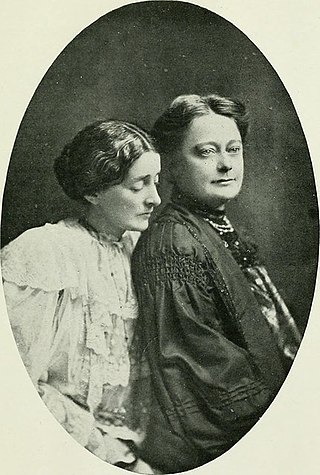Top Qs
Timeline
Chat
Perspective
Janet Gourlay
British egyptologist From Wikipedia, the free encyclopedia
Remove ads
Janet A. Gourlay (1863–1912) was a Scottish Egyptologist,[1] known for her excavation of and publication on the Mut Complex in Egypt. Gourlay was born on 30 January 1863 in Dundee, Scotland, to Henry G. Gourlay and Agnes Christine Burell.[2]
Remove ads
Personal life
Gourlay met her lifelong partner Margaret Benson in 1896 during the second excavation of the Mut Complex[2] by their mutual friend Lady Jane Lindsay.[3] In conjunction with their social relationship, they formed a scientific partnership that benefited the pair and allowed them to continue their work in Egypt.[4] This partnership allowed the highly educated women to be able to travel and work without needing to rely on a man. [4] Upon completion of their excavations, Benson’s health began deteriorating, so the two women returned to their respective homes.[1] They kept in close contact via letters.[5] In these, they expressed their devotion, emotions, and happenings to one another.[6] Benson’s health never made a recovery so plans made by the pair to return to Egypt for more excavations were never continued.[1]
On 3 March 1912, Gourlay died in Kempshot Park, Basingstoke.[2] She never married.[2]
Remove ads
Career and research
Summarize
Perspective
She studied at University College, London in 1893, supervised by William Matthew Flinders Petrie and Margaret Murray[7] gaining excavation experience to add to her theoretical knowledge. Gourlay joined Benson in 1896 in the second season of excavation at the Mut Complex in Karnak, Thebes, in Egypt.[8] The pair stayed at the Luxor Hotel for the duration of these digging seasons.[9] Gourlay and Benson are credited with this excavation of the Temple of Mut, which they would later publish an account of in 1899.[10] It was published as an incomplete work, so that the information could be available to others and it would not be forgotten as it previously had been, which they explained in the preface.[11] Gourlay and Benson were the first women to undertake an excavation of this nature and is acknowledged in their preface, which reads "we have to thank M. de Morgan’s liberality for the first permission to excavate given to women in Egypt".[12]
Their excavation would go on to span two digging seasons, resulting in three digging seasons total for the Mut Complex.[8] The two women restored and uncovered various pieces of sculptures, heads, figures, and architecture.[12] Notable statuary includes the head of Amun (or Amun-re), the head of Ramesses III, a statue of Ramesses II, the figure of priest Sur, Senenmut, and Bak-en-Khonsu, and various other figures.[13] One of the most well known figures recovered by Gourlay and Benson was the head of a figure, commonly referred to as the Benson Head.[10] After identifying the items, the pair made an effort to account for religious representations associated with the pieces.[12]
Gourlay later worked with Percy E. Newberry in 1900 and 1901.[14] The two would publish a journal article describing the excavation of Mentu-Em-Hat.[15]
Remove ads
Publications
- Benson, Margaret and Gourlay, Janet. The Temple of Mut in Asher: An account of the excavation of the temple and of the religious representations and objects found therein, as illustrating the history of Egypt and the main religious ideas of the Egyptians, London, John Murray, 1899[11]
- Gourlay, J. A. with Percy Newberry, "Mentu-em-hat," Recueil de travaux relatifs à la philologie et à l'archéologie égyptiennes et assyriennes: pour servir de bulletin à la Mission Française du Caire, 20:3-4 (1898), 188-192.[15]
References
External links
Wikiwand - on
Seamless Wikipedia browsing. On steroids.
Remove ads

